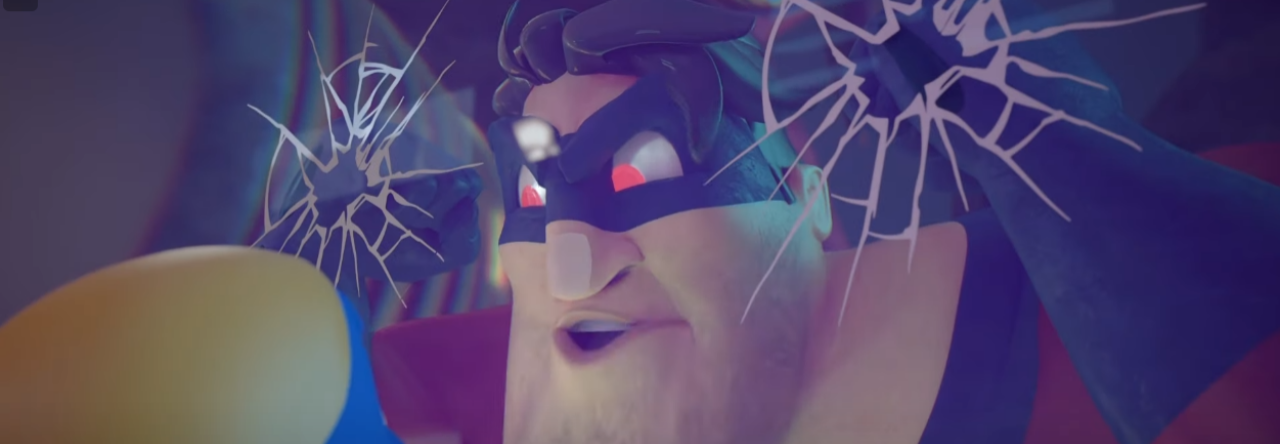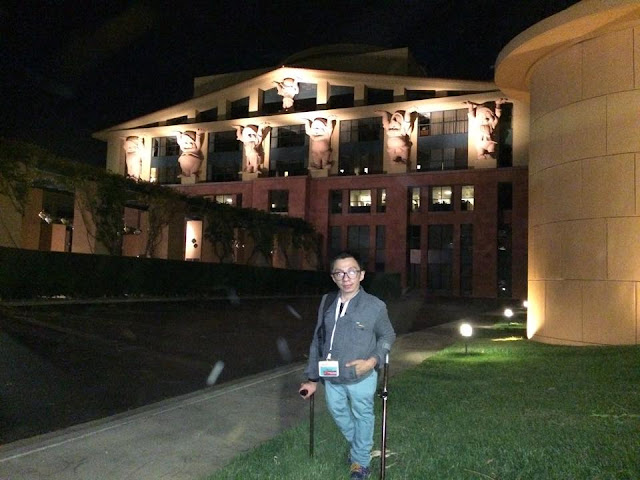Author: AnimSchool Page 19 of 26
“Animators can only draw from their own experiences of pain and shock and emotions.”
“All the technical considerations are unimportant when confronted with the question of ‘Does it look right?’”
“Animation is not so much about moving stuff as it is about moving the audience.”
“Believe in your character.”
“Animation means to invoke life, not to imitate it.”

Brien Hindman is an environmental modeling supervisor at Disney Animation and an Instructor at one of the best 3D animation schools– AnimSchool. Previously, he was a senior modeler at Blue Sky Studios as well as the environmental modeling lead for Ice Age 3. Films he has worked on include: Moana, Big Hero 6, Frozen, Wreck It Ralph, Epic, Ice Age: Continental Drift, Rio, Ice Age: Dawn of the Dinosaurs, Horton Hears a Who!, Ice Age: The Meltdown, and Robots.
As he himself is one of the many modelers at Disney who watches incoming demo reels on a regular basis, he gives his students lots of advice about the best, most effective ways to create their demo reels. Despite being a very busy guy, Brien agreed to share his insight with all of our readers.
What are the guidelines you tell your students when making a turntable?
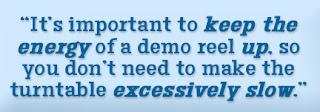 Be sensitive to screen time. Remember that professionals are looking at your work, and they can tell within a few seconds if it’s good or not. It’s important to keep the energy of a demo reel up, so you don’t need to make the turntable excessively slow. Generally about 3 rotations within 5 seconds is enough, which includes almost a full rotation with the wireframe comped onto the model. Start the turntable almost a full second before the most important side of the model, which typically includes the face. This gives you time to cross dissolve from your previous model, as well as giving the viewer enough time to figure out what she or he is looking at. It’s a bit annoying to have to wait a full second to see the face, but I’ve seen many turntables that start out on the face, but includes a cross dissolve, so we are essentially seeing the backside of the model first. It’s a good way to kill the moment of the demo reel. Further, end the rotation in a smart place. It doesn’t have to be where you began it, but you want to leave the model in an interesting place. It makes a better impression. Generally, 2 seconds or so per rotation is good, but it really depends on the model. I would say 4 seconds is pushing it in terms of speed.
Be sensitive to screen time. Remember that professionals are looking at your work, and they can tell within a few seconds if it’s good or not. It’s important to keep the energy of a demo reel up, so you don’t need to make the turntable excessively slow. Generally about 3 rotations within 5 seconds is enough, which includes almost a full rotation with the wireframe comped onto the model. Start the turntable almost a full second before the most important side of the model, which typically includes the face. This gives you time to cross dissolve from your previous model, as well as giving the viewer enough time to figure out what she or he is looking at. It’s a bit annoying to have to wait a full second to see the face, but I’ve seen many turntables that start out on the face, but includes a cross dissolve, so we are essentially seeing the backside of the model first. It’s a good way to kill the moment of the demo reel. Further, end the rotation in a smart place. It doesn’t have to be where you began it, but you want to leave the model in an interesting place. It makes a better impression. Generally, 2 seconds or so per rotation is good, but it really depends on the model. I would say 4 seconds is pushing it in terms of speed.In general, what should a good modeling demo reel look like in terms of length, variety, and number of models?
What makes the best arrangement of models, for example should the best ones be at the beginning, the end, or a little of both?
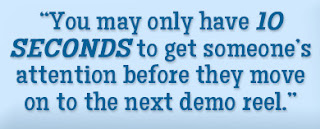 Many people have different opinions on this matter. I think best first, second second and third last is best. You may only have 10 seconds to get someone’s attention before they move on to the next demo reel, so it’d be a shame if they never saw what you consider to be your second best work if it is last. That said, you want to end strong and leave a good impression. The third best model is generally enough to do that.
Many people have different opinions on this matter. I think best first, second second and third last is best. You may only have 10 seconds to get someone’s attention before they move on to the next demo reel, so it’d be a shame if they never saw what you consider to be your second best work if it is last. That said, you want to end strong and leave a good impression. The third best model is generally enough to do that.Should our modeling reels differ depending on the studio we are applying for? If yes, how so?
You guys look through hundreds of demo reels all the time and I’m sure they all start to look the same. How can we make ours stand out from the rest and be remembered?
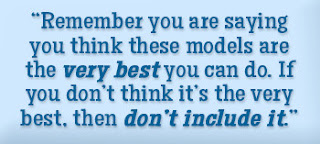
What are some common mistakes that you often see people make in their modeling demo reels?
They add music. They don’t show wireframes. They add models that they shouldn’t have added that aren’t nearly as good. It shows a lack of judgement in that case. Remember you are saying you think these models are the very best you can do. If you don’t think it’s the very best, then don’t include it.
Any final words of wisdom?
Thanks Brien!
In this clip from a class lecture of “Introduction to Maya,” AnimSchool instructor Justin Barrett talks about rotation tool and how to effectively use its gimbal mode.
For more helpful tips, come and join us at www.animschool.com
How did it feel the moment you got your first internship at Walt Disney Animation Studios?
 |
| Dylan with the other 9 Disney Interns at Disneyland |
What was a typical day like for a Disney Intern?
Was that very different from a typical day as an intern at Lucasfilm?
How do you think you have grown from your experiences at two of the biggest animation/vfx studios of all time?
Clearly you are a pro at getting huge internships by now, so do you have any tips or words of wisdom for the rest of us who want to apply?
Thank you so much for chatting with us Dylan and best of luck in the future!
Come learn with us at animschool.com
In this clip from Advanced game animation term, JP Rhinemiller critiques a student’s shot and highlights the importance of adding interesting transitions in game animation.
For more helpful tips, come and join us at www.animschool.com
During most terms, AnimSchool offers a free art class open to all of the students. In this term’s Character Design class, Art Director and Visual Development artist Matthew Boismier explains the importance of making characters relatable.
To learn more about character design, join us at animschool.com
In this clip from a class lecture, AnimSchool instructor Kent Alfred talks about basic jumping and spine reversal and the how the latter helps to sell force in the jump.
For more helpful tips, come and join us at www.animschool.com
In AnimSchool’s Intro to 3D Lighting class, Blue Sky Studios Lighting TD Brandon May explains how lighting can be used to help the storytelling process.
For more useful tips like this one, please come and join us at www.animschool.com
Carlos Rivas was one of our most helpful students. He would always give his support to his classmates and would never hesitate to share his resources. It was a delight to interview him.
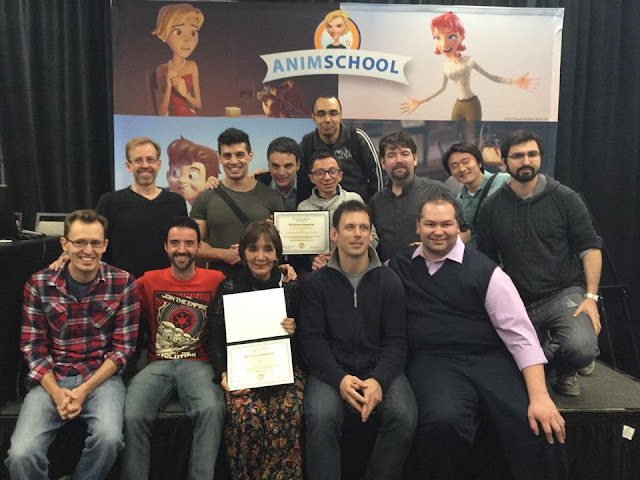 |
| Graduation ceremony with David Gallagher, AnimSchool staff, and students at CTN booth. |
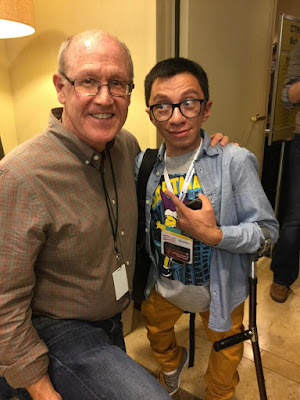 |
| Carlos Rivas with Glenn Keane |
It was interesting how it all happened. I was very disappointed that I couldn’t buy ticket to his workshop because they got sold out so quickly. So I got ticket to another workshop and as I was walking down the hall, a guy who looked like Glenn passed me. I didn’t realize it was him till after like 40 frames.
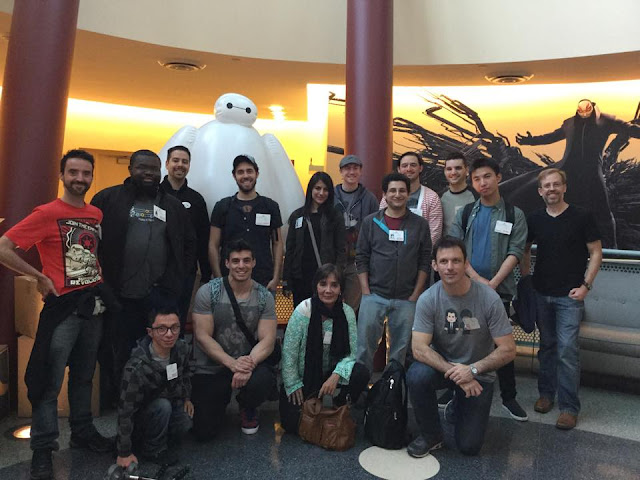 |
| AnimSchool students and teachers at Disney Studios |
In AnimSchool’s Advanced Modeling class, Blue Sky Modeler Adam McMahon shows how to extract clothes from the body mesh in Zbrush.

